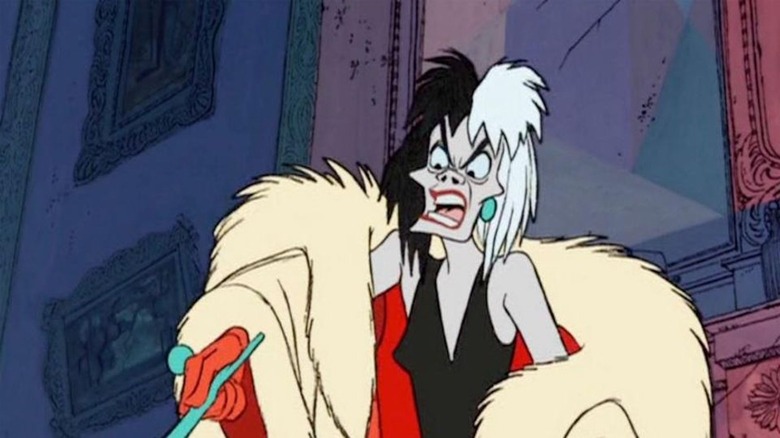
Heroes are nice and all, but there's an undeniable quality that makes villains fascinating. Often the outcasts of society, villains hunger for recognition and power, and typically, what separates them from the "good" people in society is what they're willing to do to get what they want. Some are just like us, and some are unrecognizably evil, but they're all equally intriguing. Throughout cinematic history, many iconic villains have graced our screens, showing us that it's just so good to be so bad.
Villains have been essential to animated stories for ages, but Disney villainy is its special brand. Disney villains are the characters we love to hate (or simply love to love). In over 60 Disney animated films, we've seen villains of all shapes and sizes, with wide ranges of motivations. While villains have taken the backseat in the last decade or so in Disney animation, they're still essential to many a classic Disney film. Which villains have truly stood the test of time? After going through every single Disney villain, here are the standouts — these are the top 20 Disney animated villains, ranked.
Prince John
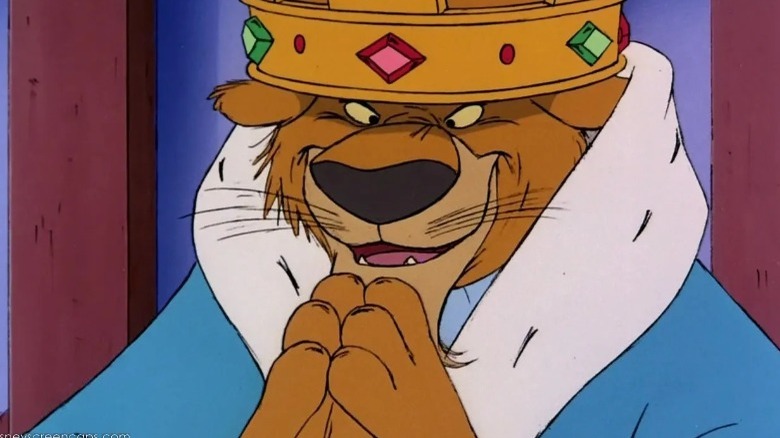
There's an old saying that there are only two things that are certain in life: death and taxes. That must be something that Prince John takes to heart, as nothing excites him quite like tax day. Some feel a thrill when it's their birthday or when they accomplish something special, but for Prince John, it's that unstoppable joy that comes with taking every last penny from his destitute citizens to line his own pockets. His adversary is Robin Hood, the sexy socialist fox whose crime is — helping the poor survive. Okay, so technically, he steals but only from the outrageously rich Prince John to ensure that people don't go hungry. Prince John is probably the least relatable villain around unless, of course, your butler is holding whatever device you're reading this on.
"Robin Hood" is a film that gleefully lampoons the wealthy, and it takes Prince John square in its sights. He's more of a whimpering buffoon than a bonafide baddie and is often seen sobbing and sucking his thumb — much to the dismay of his henchman Sir Hiss. He's a pretty one-dimensional character whose personality is given a considerable upgrade thanks to the voice work of Peter Ustinov. Ustinov intricately layers Prince John's insufferable whining with scathing malice that serves to remind audiences that he's very much in charge, even if he really shouldn't be. Prince John is viable proof that even the silliest, most incompetent villains are still capable of causing problems aplenty.
Governor Ratcliffe
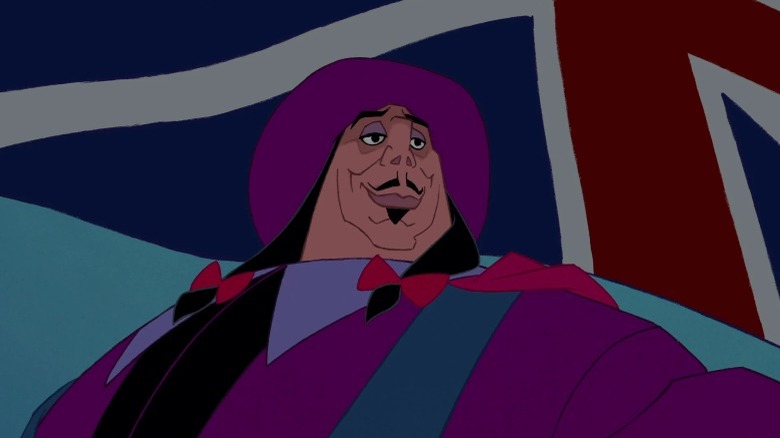
I'd be willing to bet that our next villain sees the world in much the same way as Prince John. Governor Ratcliffe is tasked with the arduous mission of traveling across the ocean to find gold. Like Prince John, he's deeply motivated by money. He's more complicated though, as he's also desperate for glory and recognition from his peers that mere gold simply cannot provide. Ratcliffe's desire to be recognized for his hard work is relatable. His rampant xenophobia is far less so. He takes a particular delight in referring to indigenous people as savages, and he'll happily slaughter them all and destroy their land to fill his coffers.
Throughout "Pocahontas," it becomes increasingly clear that Ratcliffe is downright despicable and will do absolutely whatever it takes to complete his mission. His hatred knows no bounds, and he regularly leads his men to do questionable things. Thankfully, greed winds up being Ratcliffe's downfall, and he ends up shooting his own soldier, which leads to him being deservedly jailed. Ratcliffe could be a lot higher on this list, as he's got a memorable design, a glorious purple outfit, and one of the most underappreciated songs in the terrific "Mine, Mine, Mine." Ratcliffe doesn't get quite enough camera time to rise in the ranks, but he's still a memorable addition to Disney's world of villainy.
Dr. Facilier
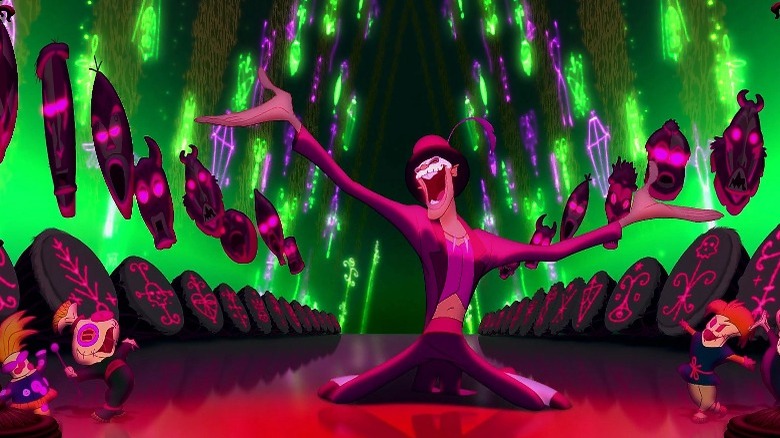
The color purple is an essential part of many a Disney villain's wardrobes. It's a color rooted in wealth, mystery, and royalty, which reflects the visions of many a Disney antagonist. Dr. Facilier (brilliantly voiced by Keith David) is a down on his luck witch doctor who has some serious resentment toward wealthy aristocrats. Always lurking in the shadows, Facilier concocts a plan to obtain wealth of his own, turning Prince Naveen (Bruno Campos) into a frog and working together with Naveen's assistant to finally take what they view as rightfully theirs.
Many great villains are given a musical number to let audiences in on what the villain's motivations are, and few are as show-stopping as Dr. Facilier's. The dazzling "Friends on the Other Side" is the perfect blend of the visually sublime and the genuinely frightening, and the animators have had a fantastic time, using just about every color imaginable to explore Facilier's unique powers. His control over shadows and darkness makes him a legitimate threat, and he even manages to kill a beloved character without hesitation. He gets close to his dreams of taking over the city of New Orleans and becoming all-powerful, only to be undone by his misunderstanding of a frog's anatomy. Unfortunately for him (and fortunately for the wonderful Tiana, voiced by Anika Noni Rose), his debts catch up to him, and he receives one of the most brutal downfalls as he's dragged by the shadows into the spirit world where he's doomed for all eternity.
Captain Hook
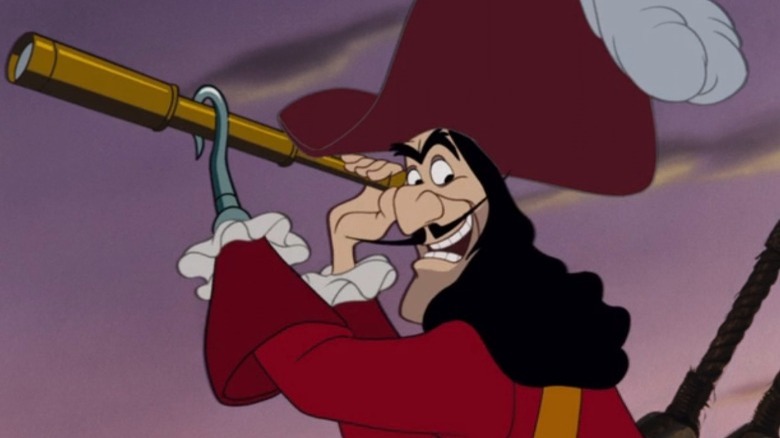
If you're someone regularly bothered by a pesky kid, then Captain Hook may feel especially relevant. Hook is first seen studying a map, trying to find Peter Pan and smoking an outrageous double cigar as he twirls his elegant pointy mustache. His motivation is straightforward: He wants the boy dead for cutting his hand off and feeding it to a crocodile, which, to be frank, is pretty justified. You almost feel bad for Hook, as he's relentlessly taunted by the very same crocodile, who is constantly in pursuit to consume the rest of him.
While there are plenty of threats in Disney movies, actual deaths are considerably rarer. Hook changes that almost instantly, nonchalantly shooting one of his crew for singing a song. In another moment, Hook throws a member of his crew overboard with his hook. So many villains promise violence and murder yet never end up delivering the goods, but Hook does it almost immediately and without a moment's hesitation. Despite this, he has a surprising emotional vulnerability and typically quakes with fear over the crocodile's pursuit. Don't let his good looks and fashionable outfit fool you. Hook is one of the most menacing villains in the Disney canon.
Chernabog
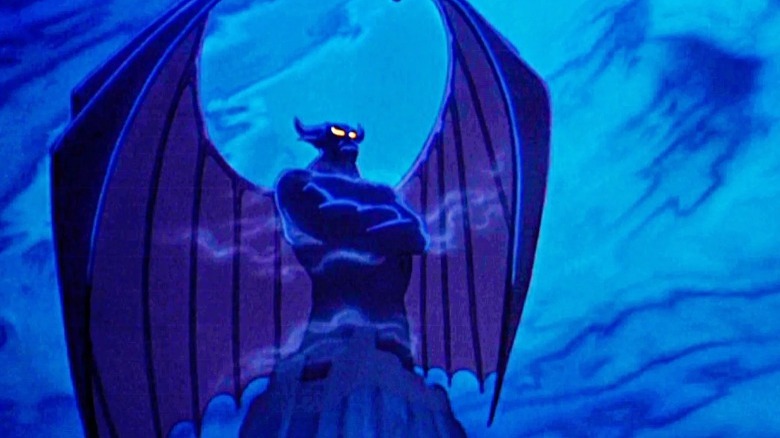
Many great Disney villains win the hearts of audiences with memorable songs or a devilish quip, but in Chernabog's case, he has nothing but sheer physical dominance to rely on. As the menacing big bad from the 1940 musical anthology, "Fantasia," Chernabog appears in the dizzying "Night on Bald Mountain" sequence and doesn't say a word, though his actions are made highly memorable thanks to great design and the beautiful musical accompaniment of Modest Mussorgsky's masterwork.
His power is immense. With the mere wave of his hand, he's able to summon the spirits of the dead to do his bidding. His size is every bit as awe-inspiring, and in terms of sheer scale, he's undoubtedly the biggest villain. Not even Monstro the whale can compete with Chernabog, who's quite literally the size of a mountain. Chernabog was animated by Bill Tytla, a titan of Disney's first films, and Tytla makes Chernabog unforgettable, striking a perfect balance of looking like he's carved into a mountain and therefore largely immobile but giving the illusion that he could break out at any moment to destroy the world.
It's surprising (and a bit disappointing) that such a menacing monstrosity is so easily defeated by something as measly as a church bell, but perhaps that speaks more to my desire to see Chernabog wreak absolute havoc! Despite an appearance so small in Disney animation's longest movie that it may as well amount to a cameo, an incredible design matched with incredible power has allowed Chernabog to remain one of Disney's greatest villains.
Gaston
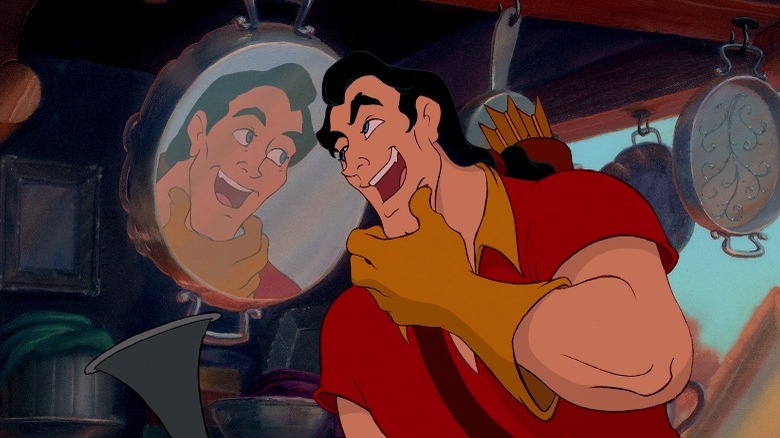
While it disturbs us all to see Gaston (Richard White) looking so down in the dumps, rest assured, nobody is more upset about it than Gaston himself. Without a doubt, the vainest man in the Disney canon (only to be outdone by one particularly vicious lady further down the list), Gaston is all about appearances. While many villains dream of power, revenge, violence, or generally loftier ambitions, Gaston is driven by his romantic desires. "Beauty and the Beast's" opening song, "Belle," establishes that Gaston is adored by every woman in town except Belle, who has no interest in him whatsoever. Despite a firm rejection, Gaston is determined to marry her. I'd say "win her heart" here, but I don't think Gaston has any genuine interest in Belle and just wants to prove that every woman in town does indeed desire him.
It may be surprising that Disney's most muscly man is so low in these rankings, and while Gaston is spectacularly obnoxious and a delightful character you love to hate, is he really all that villainous? He's certainly a scumbag and has some nasty qualities, but going toe to toe with the other villains on this list, he really does pale in comparison. His motivations and abilities aren't quite up to par. Heck, there's a lot of mileage in the argument that the Beast (Robby Benson) is actually more of a villain than Gaston. He does, after all, imprison Belle for wanting to save her father's life. That's not even something Gaston is capable of.
The Coachman
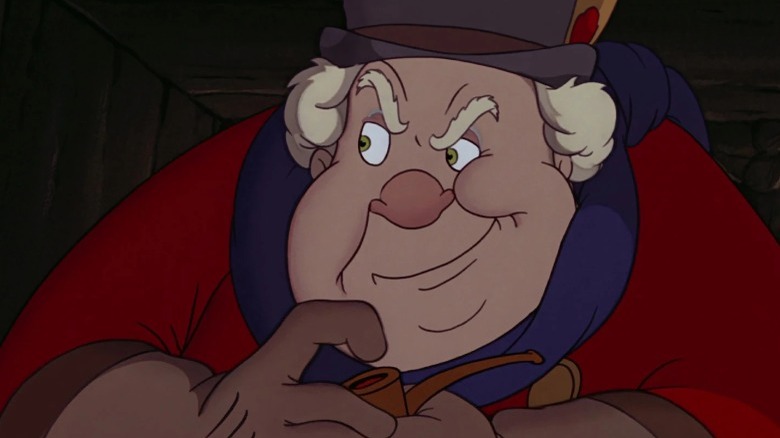
Despite nearly 60 films being released since "Pinocchio" came out in 1940, it remains one of the studio's darkest movies. Part of the reason why is that "Pinocchio" doesn't just have one villain — it has five. While they range widely in terms of downright nastiness, the most sinister of them all is the Coachman. He's physically imposing, and it's clear that when he's speaking to fellow villains Honest John and Gideon that he's willing to go a great deal further than them for a payday. When the Coachman tells them he's taking Pinocchio and some other boys to Pleasure Island, they're terrified, but the Coachman is thrilled, and the camera closes in his devilish grin, making for one of the most frightening shots in film history. The coachman takes immense pleasure in doing his work, gleefully watching as boys are turned into donkeys that he sells to work as laborers.
One of the most terrifying things about the Coachman is that he suffers no consequences. Many villains wind up behind bars or fall to their fiery doom, but the Coachman doesn't even get a slap on the wrist. Just thinking that he's out there taking more kids to Pleasure Island and getting richer from it is enough to make your skin crawl. The Coachman is a crushing reminder that evil lurks among us unchecked and that justice isn't always served.
Shere Khan
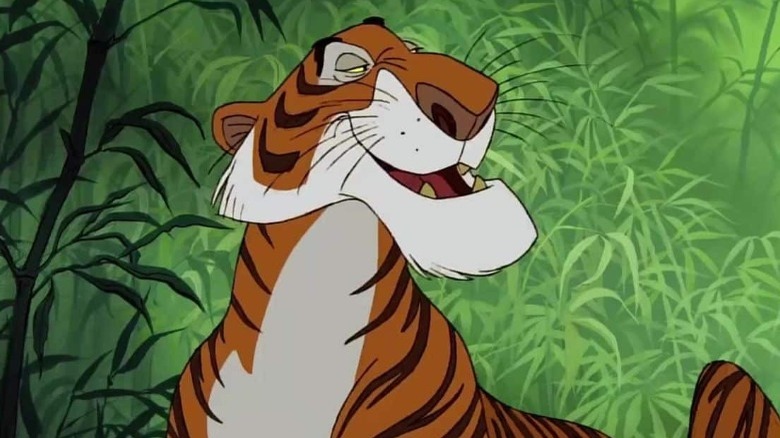
"The Jungle Book's" Shere Khan (voiced by George Sanders) is the notorious tiger who has a well-worn reputation for being downright vicious and a ruthless killer. Though he's regularly referenced as the main reason the animals need to get Mowgli (Bruce Reitherman) out of the jungle, as Shere Khan has sworn to kill any human that enters their domain, he's not seen until the second half of the film. Despite his limited presence, he makes the most of his brief screen time. His showdown with Mowgli showcases what a formidable foe he is, even if he succumbs to his intense fear of fire.
Oscar-winner George Sanders does a brilliant job voicing Shere Khan, embuing the vicious tiger with a resplendent charm that makes you covet a meal with him in which he gleefully dishes the jungle's spiciest gossip. It's that impressive duality that Shere Khan possesses that makes him an utter delight, even while he's trying to destroy our beloved protagonist. Shere Khan is an early example proving that villains can be a lot more than just evil. They can be really fun, too.
Mother Gothel
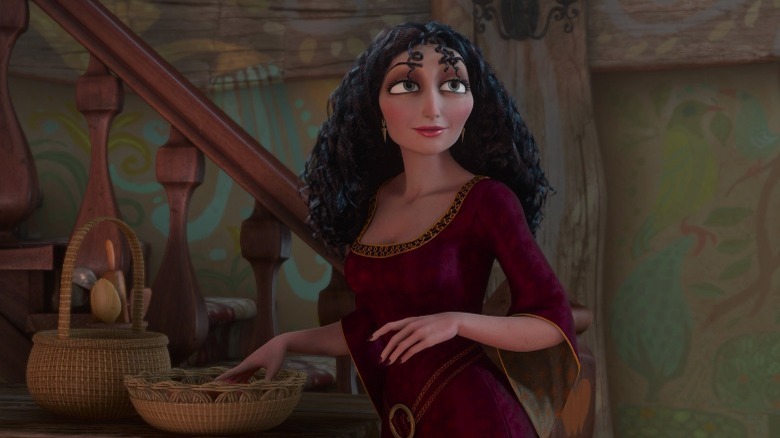
A spiritual successor to the gloriously vain Gaston, "Tangled's" Mother Gothel (Donna Murphy) is completely obsessed with youth. In a desperate bid to stay young, Gothel kidnaps Rapunzel (Mandy Moore) to make use of her magical hair that restores youth. In her defense, she used to use a magical flower, but the king's soldiers took it to save the Queen's life. A desperate Gothel kidnapped Rapunzel (who inherited the power) to keep herself young, and more importantly, alive.
Gothel's terrifically catchy song, "Mother Knows Best," provides a masterclass in manipulation and passive-aggressiveness, listing all the ways Rapunzel couldn't possibly survive on her own for even a second outside the tower, all while telling Rapunzel how much she cares about her. This is further underlined in the song's reprise, which sees Gothel deliver a nasty tirade against Rapunzel that allows our heroine to finally begin to see just how cruel and manipulative her captor-mother can be. While Gothel shares many similarities with Gaston, what she does is considerably crueler: kidnapping a child and imprisoning them while convincing them that they're your daughter is pretty sick and twisted. Gothel represents a terrifying sort of evil that's all too real. She doesn't use any sort of magical powers to enslave Rapunzel, just words. And words can be the deadliest weapons of all.
Hades
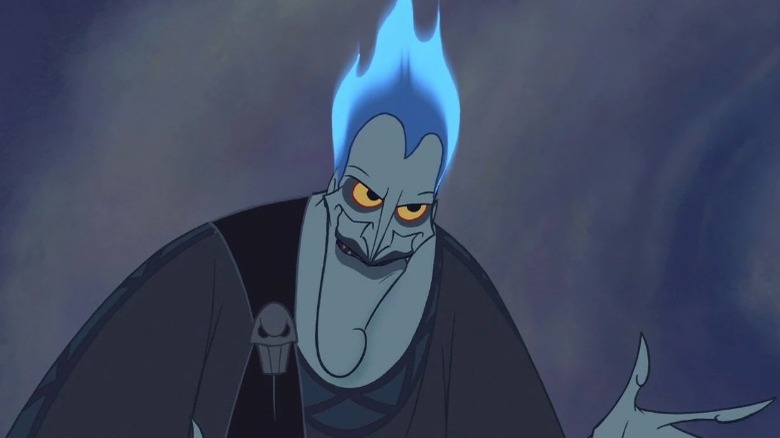
Everyone's favorite fast-talking, fiery-haired god of the underworld, Hades (James Woods) is easily one of the most downright delightful villains, cracking jokes the moment he first appears on-screen in "Hercules." As the muses so beautifully, Hades is as mean as he is ruthless and thinks of himself far too highly to run something as dull and uninspiring as the underworld. As many great villains do, Hades has spent many years developing a complex scheme to lead an uprising on Mount Olympus to steal power from Zeus. All is going to plan until the fates reveal that Zeus' child, Hercules, will undo Hades' master plan. In a move that would make Mother Gothel proud, he kidnaps Hercules and turns him mortal. However, Hercules would retain his immense physical power.
Of course, Hades is unsuccessful in his quest to take over the world, but it's incredibly satisfying to watch him try. His ability to manipulate and his charisma are overwhelming, and he gets close to succeeding. If only there wasn't that meddling Hercules! James Woods injects Hades with extraordinary life, transforming what could have been a straightforward nasty villain into a complex and very funny icon. Woods provided an impressive amount of ad-libbing, which had the animators working hard to keep up with his ultra-quick delivery. His sudden shift from smooth-talking to completely enraged help make him one of the most well-rounded and unforgettable of all Disney villains.
Jafar
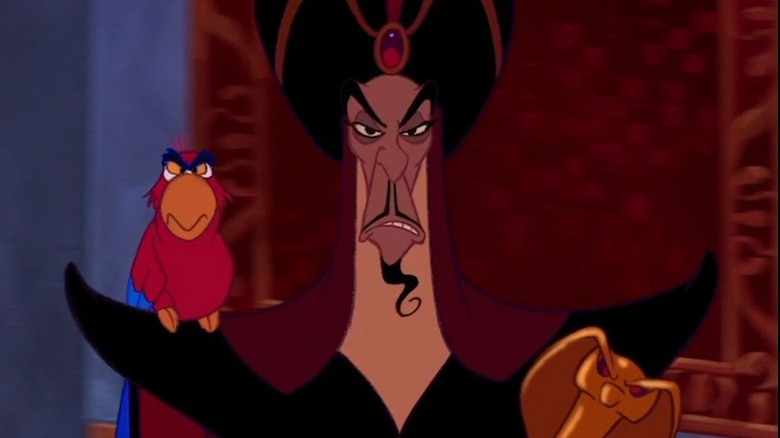
You've got to feel for Jafar (Jonathan Freeman) in "Aladdin." As Grand Vizier of Agrabah, he does all of the work and gets none of the credit. He's the Sultan's (Douglas Seale) trusted advisor, but it's clear that Jafar is far more responsible and better at his job than the sweet yet incompetent Sultan. It's no wonder he's hatching a plan to take over Agrabah to finally get the respect he feels he so richly deserves. Jafar has spent much of his life searching for a magic lamp that can finally give him the power he needs to accomplish his wildest dreams.
Legendary animator Andreas Deja did a fantastic job creating Jafar, giving the menacing Grand Vizier a slender and almost unassuming design. Jafar doesn't look inherently evil, and if anything, he looks like an eccentric family member you may run into at a reunion. He even has an adorable parrot on his shoulder (the fantastic Gilbert Gottfried) to keep things fun! Still, Jafar is more than a quirky uncle type, and his appearance makes his inherent evil all the more surprising and effective. He even gets some fun transformations, turning himself into a beggar, a massive cobra, and ultimately, an all-powerful genie, which proves to be his swift undoing. He's a character so adored that he was the star of Disney's first-ever straight-to-video sequel, "The Return of Jafar," a genuinely bad film that ended up making the studio an awful lot of money.
Scar
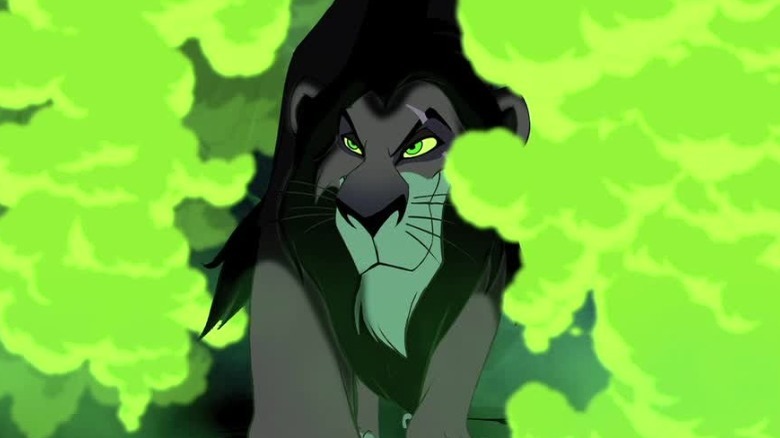
Few villains are beloved as Scar (Jeremy Irons), the menacing lion desperate for power in "The Lion King." There's a clear inspiration from Shere Khan on display, as Jeremy Irons infuses Scar's menacing behavior with a charming sophistication, gleefully manipulating a young Simba (Matthew Broderick) into believing he's responsible for his father's death. Scar's charisma and ability to rouse a crowd make him terrifying. His stand-out musical number, "Be Prepared," has visual cues that harken back to the Nazi propaganda film, "The Triumph of the Will." Making a comparison to one of the world's most notorious monsters is no small statement, but the Nazi comparisons speak to the terrifying way that a person can convince an army with sheer will.
Many villains get so close to success that they can practically taste it, but Scar manages the seemingly impossible feat of actually accomplishing his goal. Scar wants nothing more than the be the lion king, and he does it! Scar is so threatening because we actually see his dream made a reality, and the results are terrifying. Under Scar, everyone in the Pride Lands is on the verge of starvation, and the land that once thrived under Mufasa is now little more than a graveyard. That's a huge part of the reason watching the debonair lion's downfall is so satisfying. Scar must be eliminated for the Pride Lands to return to their former glory.
Cruella De Vil
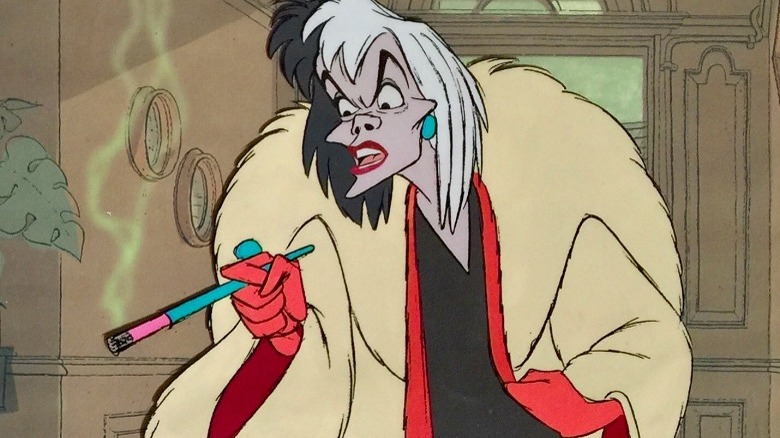
Isn't there something just tantalizing about a group of puppies that makes you want to turn them into the latest fashions? No? Well, me neither, but then again, we aren't the iconic Cruella de Vil. She's voiced by the fantastic Betty Lou Gerson, an impressively diverse actress who also gave life to the gentle narrator in "Cinderella." In the 1961 classic, "One Hundred and One Dalmatians," not much is known about de Vil, but her reputation precedes her, and she's talked about (and thankfully, sung about) long before her wafting green smoke cloud and enormous fur coat appear. She has one of the hardest motivations to justify. How exactly can one defend her mission to kidnap over 100 dalmatian puppies for the sole purpose of turning them into a fabulous outfit? Marc Davis, one of the all-time greatest animators, was responsible for turning her into an unforgettable character, and he succeeded, taking inspiration from Gerson's performance to design a truly legendary character.
Cruella is undoubtedly one of the most popular villains in the Disney canon. She was played wonderfully by Glenn Close in the live-action remake "101 Dalmatians" and its sequel, "102 Dalmatians." She also recently got her own movie with the live-action "Cruella" in which Emma Stone did her best to make a dreadful movie somewhat watchable. Still, the definitive version of Cruella de Vil is the manic, unhinged fashion icon that first graced our screens in 1961.
Lady Tremaine
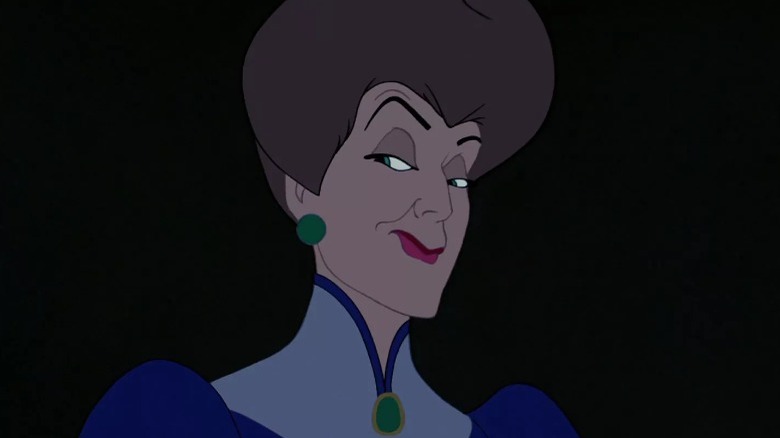
Oftentimes, a character's first moment on screen can tell us a lot about the kind of person they are. In the 1950's masterpiece, "Cinderella," Lady Tremaine (Eleanor Audley) has a highly memorable entrance that tells the audience just how frightening she is. While she makes an appearance in the film's opening narration, her first proper appearance comes a bit later. Cinderella is doing her daily chores, which amount more to forced labor as she polishes and cleans every inch of their enormous home in addition to doing the laundry, cooking, and anything else you could fathom.
We hear her first: a sharp cry calling out for Cinderella. As Cinderella walks into the grand, shadow-cloaked bedroom, we see the sinister green eyes of Lady Tremaine (and the glistening eyes of her cat, Lucifer) piercing through the shadows. The image of Lady Tremaine sitting in bed and stroking her cat while aggressively silencing Cinderella and demanding she does even more work is bone-chilling. Audley's voice work is outstanding as she delicately lists Cinderella's chores before violently barking her demands.
As with the Coachman in "Pinocchio," Lady Tremaine never faces any consequences. The worst thing that happens to her is that she loses her maid, which hardly feels like a fitting punishment for someone who has taken such joy in torturing an innocent young woman for years. What's fascinating about Lady Tremaine is that despite the illusion of wealth, she's barely holding her house together. Getting her daughters to the ball is a desperate, last-ditch effort to keep the family prosperous. It's the illusion of wealth and class that allows Lady Tremaine to get off scot-free.
Professor Ratigan
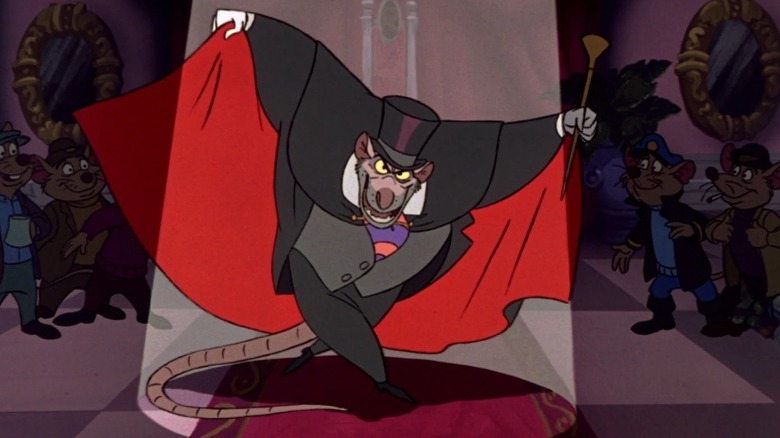
The world's greatest criminal mind is also Disney's most underappreciated villain. Voiced by one of horror's most influential actors, Vincent Price, Professor Ratigan is a big part of why "The Great Mouse Detective" turned the tide for Disney in the mid-'80s and deserves to be considered the real start of the Disney Renaissance. Don't let his debonair appearance fool you. Underneath his dapper top hat and elegant black tuxedo is a legitimately sinister rat. Ratigan schemes to take over the city of London by replacing the Mouse Queen with a robot, which is a flawless plan that couldn't possibly go awry in mere moments. Considering that his band of thugs proclaim him to be "the world's greatest criminal mind" in a glorious musical number, it's rather surprising his scheme is so shoddy. Despite a questionable plan, he's got what it takes to make it happen, including a veritable swarm of henchmen like the one-legged bat Fidget and his pet cat Felicia, who takes great pleasure in eating Ratigan's enemies.
Ratigan comes incredibly close to taking out his arch-nemesis, Basil, and if not for a miraculous last-second stroke of luck, Ratigan would have defeated his pesky rival once and for all. Price is having the time of his life playing the evil rat, delivering every line with a sparkling gusto. Ratigan is often elegant and well-spoken, but when he gets angry, he becomes practically feral, revealing a complicated side of a fascinating villain.
Maleficent
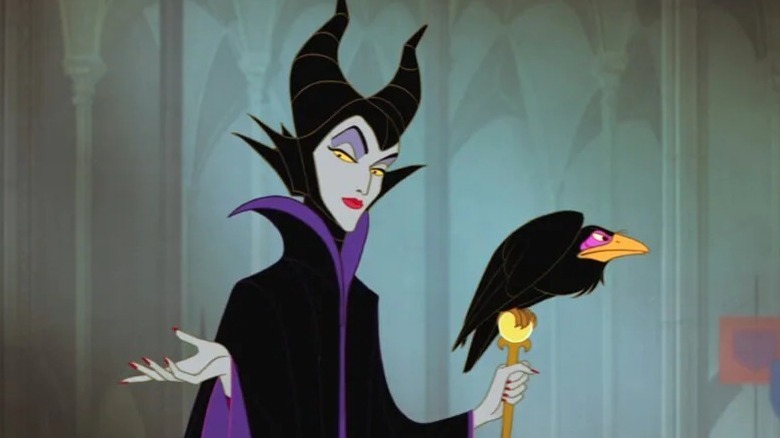
Villains encompass many things, but when it comes to Disney, they're often scheming for either wealth or power. They can be vain, vengeful, and even lustful, but until Maleficent (Eleanor Audley), they were never petty. In Disney's most visually unique film (thanks to the fantastic Eyvind Earle), the sorceress Maleficent places a curse on a baby princess because she wasn't invited to her christening. The poster child for pettiness dons a magnificent black and purple cloak. Her fantastic design by Marc Davis, including large horns and pale green skin, has allowed Maleficent to be instantly recognizable. The all-powerful sorceress is responsible for some truly stunning magic. She also engineers Disney's most spellbinding sequence, which finds a hypnotized Princess Aurora (Mary Costa) wandering through a castle to find a lone spinning wheel, pricking her finger to ensure her endless sleep. The only reason Maleficent doesn't succeed is timing. If she had just waited until after Merryweather (Barbara Luddy) bestowed a blessing upon Aurora to crash the party, she would have been victorious.
While many villains' fates are presumed rather than made explicit, Maleficent receives one of the more obvious demises. In the epic face-off between Maleficent (freshly transformed into a menacing dragon) and Phillip, the prince drives a sword through her heart. Maleficent screams as a pool of blood forms (an anomaly for Disney) and collapses. The film even goes so far as to confirm the character's death, showing the sword plunged into her cloak. Despite her brutal ending, Maleficent stands as a powerful reminder to double-check your invitation list.
Yzma
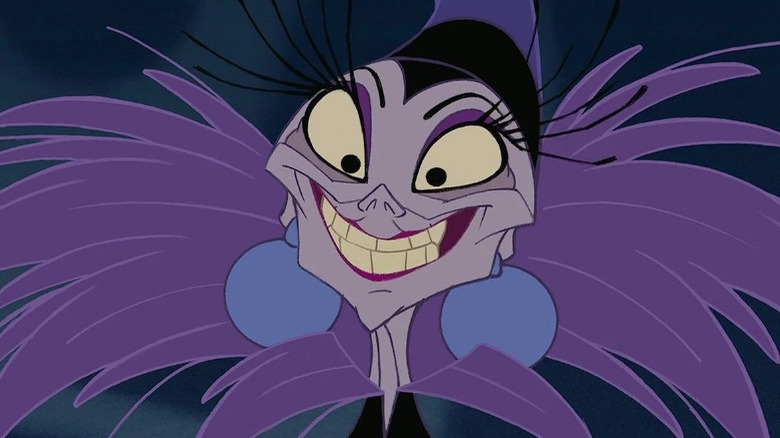
It's hard to believe that a film as wondrous as "The Emperor's New Groove" might never have existed. It is different than every other Disney film, embracing a madcap, relentless go-for-broke energy. It's no wonder that the film's antagonist matches that energy. Voiced with extraordinary panache by Eartha Kitt, Yzma is a comic delight and a genuinely thrilling villain. Yzma serves as the advisor to Emperor Kuzco (David Spade). She longs to run things on her own, and just like Jafar, Yzma is frustrated by Kuzco's incompetence and lackadaisical attitude. As evidenced by her extraordinarily complicated secret lab, Yzma is incredibly intelligent.
Yzma is such a titanic delight because she lampoons everything that makes a villain. This is best highlighted by her ridiculously over-complicated initial scheme to eliminate Kuzco, which involves turning him into a flea, putting him into a series of boxes, and mailing him to herself. Kitt's voice work is positively electric, fleshing out Yzma with otherworldly manic energy. Kitt delicately layers every word with a gloriously seductive quality. There are villains out there that are far nastier than her, but when it comes to sheer entertainment value, few stand a chance against the force of nature that is Yzma.
Evil Queen
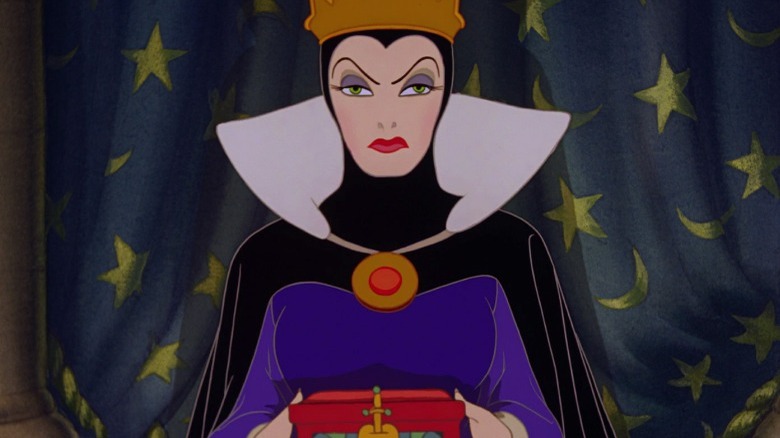
The idea of a villain rooted in vanity was at the inception of Walt Disney's initial foray into feature-length animation, as the very first villain in the Disney canon is all about the importance of appearances. In "Snow White and the Seven Dwarfs," the Evil Queen (Lucille La Verne) has just one desire: to be the most beautiful in all the land. When her magic mirror reveals that she is no longer the most stunning lady in the world, the Queen is horrified. Most people would likely just accept the news and move on, but she's not like everyone else. Instead, the Queen makes it her mission to kill Snow White (Adriana Caselotti).
There's a lot we don't know about the Queen, and that's a big part of what makes her so terrifying. When she goes down into the castle dungeon to transform into an old woman to trick Snow White, we see various skeletons. Who were they? What are they doing there? Are they the bones of those who happened to be prettier than the Queen? These are questions that are never answered, but the casual placement of skeletons speaks volumes about the Queen's malice. Disney hit it out of the park the very first time, creating an unforgettable villain whose equally terrifying as an elegant Queen in a divine purple gown and as a haggard crone in a black cloak.
Ursula
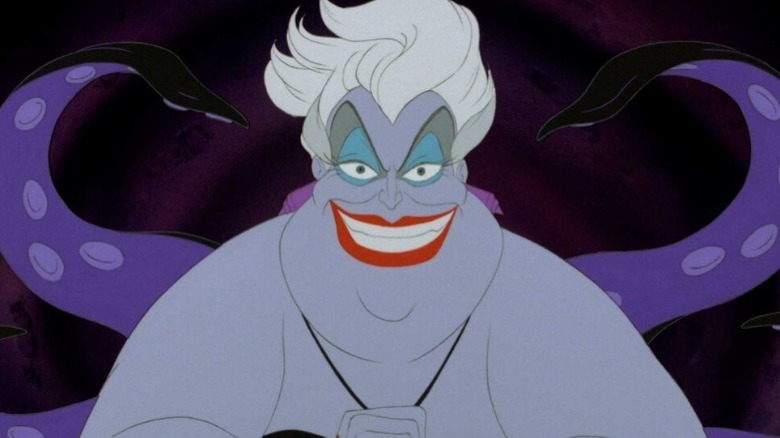
Disney went big and bold with 1989's "The Little Mermaid," ushering in a new kind of Disney film that's filled to the brim with extravagant Broadway-style musical numbers. With the incredible duo of Alan Menken and Howard Ashman behind the music, the songs in the film were bound to be unforgettable. From "Under the Sea" and "Kiss the Girl" to "Part of Your World," the film may have the strongest soundtrack of any Disney film. That is all but confirmed by the phenomenal "Poor Unfortunate Souls," sung by the sinister sea witch, Ursula (Pat Carrol).
We've talked about how many villains wear purple to signify their desire for power, but Ursula doesn't just wear purple. She is purple. Her desire to take over King Triton's (Kenneth Mars) reign in Atlantica is so powerful that it's practically taken over her body. Ursula covets Triton's throne, and she's more than willing to take advantage of Ariel (Jodi Benson), who longs to leave the ocean behind. In "Poor Unfortunate Souls," she offers Ariel the chance of a lifetime, using her immense magical powers to transform the naive mermaid into a human. However, the transaction costs Arial her voice.
Ursula is delightfully evil. She's voluptuous, campy, ridiculous, and frightening. In many ways, she seems like a glamorous drag queen, which makes a lot of sense when you realize her wonderful design was inspired by the one and only Divine.
Judge Frollo
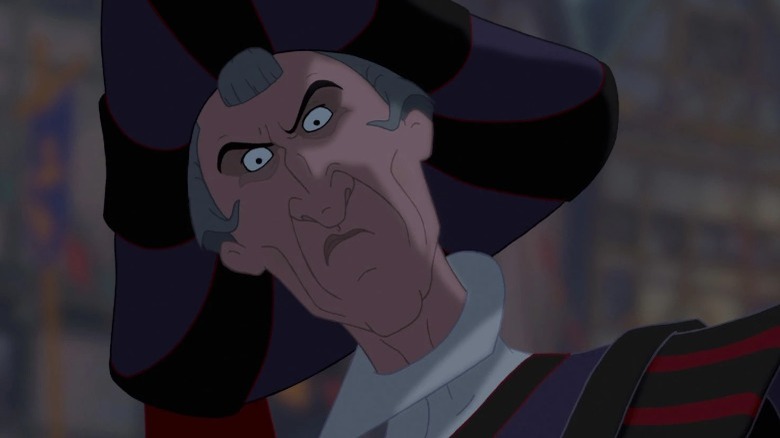
Judge Claude Frollo (Tony Jay) already has the tremendous power and status that most villains dream of, so what is it that he's really after? Frollo is the most complicated villain in the Disney canon, but much of his rage can be pinned down to his complicated sexual desires conflicting with his unflinching faith. Despite being a supposed man of the cloth, he treats people appallingly. He keeps Quasimodo in the bell tower of Notre Dame, constantly reminding him that he's hideous and that nobody else would ever dream of caring for him. Thanks to the fantastic work of animator Kathy Zielinski, Frollo's physical appearance perfectly matches his sinister actions.
Of all the villain's musical numbers, "Hellfire" stands as the most impactful, revealing the complicated layers of Frollo's fractured psyche. In Disney's darkest song, Frollo sings of his righteousness before launching into his powerful sexual desire for Esmeralda (Demi Moore) that he cannot act upon — not only because Esmeralda finds him downright despicable. Frollo is torn between his lust and his faith, which is something Disney has never dealt with before. There were hints of lust with villains like Jafar, but here, it's made explicit, as Frollo lays his feelings bare. This sequence is full of powerful religious imagery. Enormous figures shrouded in red cloaks tower over Frollo as he begs to be freed from his carnal passions. Disney has never reckoned with a villain as dark and twisted as Judge Frollo, and I'm willing to bet they never will again. When it comes to being sinister, nasty, and unforgiving, nobody holds a candle to the one and only Frollo.
Read this next: All 58 Walt Disney Animation Studios Films Ranked From Worst To Best [Part One]
The post The Top 20 Disney Animated Villains Ranked appeared first on /Film.
